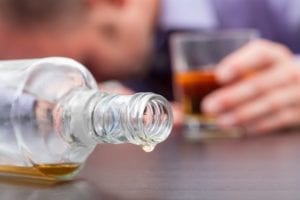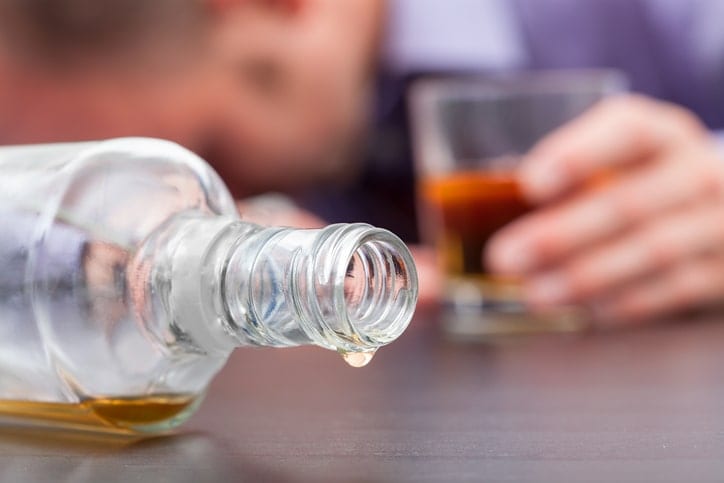 According to the Center for Disease Control (CDC), there are approximately 2,200 cases of alcohol poisoning deaths per year, which averages six instances per day. Unfortunately, not many individuals understand the limits of alcohol tolerance on the body, and as a result, alcohol poisoning can occur without much warning. Alcohol poisoning occurs when an individual consumes a large enough amount of alcohol, usually in a short period, that results in such a high blood alcohol level that it becomes toxic to their body. The effects of alcohol poisoning can occur over time, even after an individual stops drinking. This is because the blood alcohol concentration can continue to rise for 30-40 minutes, worsening symptoms of alcohol poisoning. Alcohol poisoning can be lethal with the individual progressing into a coma if medical attention is not provided promptly.
According to the Center for Disease Control (CDC), there are approximately 2,200 cases of alcohol poisoning deaths per year, which averages six instances per day. Unfortunately, not many individuals understand the limits of alcohol tolerance on the body, and as a result, alcohol poisoning can occur without much warning. Alcohol poisoning occurs when an individual consumes a large enough amount of alcohol, usually in a short period, that results in such a high blood alcohol level that it becomes toxic to their body. The effects of alcohol poisoning can occur over time, even after an individual stops drinking. This is because the blood alcohol concentration can continue to rise for 30-40 minutes, worsening symptoms of alcohol poisoning. Alcohol poisoning can be lethal with the individual progressing into a coma if medical attention is not provided promptly.
Signs and symptoms
- Confusion or disorientation
- Irregular pulse
- Depressed breathing
- Seizure
- Loss of bowel or bladder control
- Blue-tinted skin around the lips or extremities
- Cold/clammy skin
- Hypothermia
- Vomiting
- Inability to maintain consciousness
- Lack of physical coordination such as the inability to walk
Binge drinking and alcohol poisoning
One may assume that alcohol poisoning is a problem for younger individuals who don’t “know their limits” or haven’t learned how to “handle their liquor,” however, these are significant pretenses. Binge drinking is reported more frequently in young people, but alcohol poisoning is more likely to affect those who are well past their college years. Seventy-five percent of alcohols poisoning deaths are among adults ages 35 to 64, according to the CDC. Most of them are white men. However, binge drinking is tightly tied to alcohol poisoning, which usually occurs when an individual consumes a large amount of alcohol in a short period of time. The National Institute on Alcohol Abuse and Alcoholism defines binge drinking as a pattern of drinking that brings an individual’s blood alcohol concentration (BAC) to at least 0.08 grams percent. This typically happens when men consume 5 or more drinks, and when women consume 4 or more drinks, in approximately two hours.
- One in six U.S. adults binges drinks about four times a month, consuming about eight drinks per binge.
- Binge drinking is more common among those with household incomes of $75,000 or more than among those with lower incomes.
- While binge drinking is more common among young adults aged 18–34 years, binge drinkers aged 65 years and older report binge drinking more often, an average of five to six times a month.
- Although college students commonly binge drink, 70% of binge drinking episodes involve adults age 26 years and older.
- The prevalence of binge drinking among men is twice the prevalence among women.
- Binge drinkers are 14 times more likely to report alcohol-impaired driving than non-binge drinkers.
- About 90% of the alcohol consumed by youth under the age of 21 in the United States is in the form of binge drinks.
- More than half of the alcohol consumed by adults in the United States is in the form of binge drinks
- Approximately 92% of U.S. adults who drink excessively report binge drinking in the past 30 days.
Treating alcohol poisoning
If an individual is thought to have alcohol poisoning, 911 should be called immediately as medical intervention is necessary. Before the ambulance arrives, the following assistance should be given:
- Try to keep the individual awake
- Try to keep them in a sitting position, not lying down, if they do lie down, turn their head to the side so if they do vomit, they will not choke.
- If they can take it, give them water
- If the person is unconscious, put them in the recovery position (on their side) and check they are breathing
- Do not provide them with coffee; caffeine will worsen the dehydration
- Do not lie them on their back
- Do not give them any more alcohol to drink
- Do not make them walk
